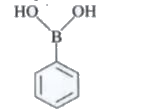Which of the following is an o−,p−directing but deactivating substituent in an electrophilic aromatic substitution :
−CCl3
−Cl
−NHCOCH3
−OCH3
The correct Answer is:B
To determine which of the following groups is an ortho-para directing but deactivating substituent in an electrophilic aromatic substitution, we need to analyze the properties of the substituents in question.
1. Understand Electrophilic Aromatic Substitution:
- In electrophilic aromatic substitution (EAS), an electrophile attacks the aromatic ring. The nature of the substituent already present on the ring influences the reactivity and the position where the electrophile will attack.
2. Identify Directing Effects:
- Substituents can be classified as either ortho-para directing or meta directing:
- Ortho-para directing: These groups donate electron density to the aromatic ring, making it more reactive towards electrophiles. Examples include -OH, -OCH3, -NH2.
- Meta directing: These groups withdraw electron density, making the ring less reactive. Examples include -NO2, -CN, -COOH.
3. Classify Substituents:
- Substituents can also be classified as activating (increase reactivity) or deactivating (decrease reactivity):
- Activating groups: Increase the reactivity of the aromatic ring (e.g., -OH, -OCH3).
- Deactivating groups: Decrease the reactivity of the aromatic ring (e.g., -NO2, -CF3).
4. Analyze the Given Substituents:
- For the question, we need to find a group that is ortho-para directing but also deactivating.
- Chlorine (Cl): Chlorine has a -I (inductive) effect which is electron-withdrawing, making it a deactivator. However, it also has a +M (mesomeric) effect, which makes it ortho-para directing. Therefore, Cl is ortho-para directing but deactivating.
- Other groups like -NH2 or -OCH3 are activating and ortho-para directing, while groups like -NO2 are deactivating and meta directing.
5. Conclusion:
- The only substituent that is both ortho-para directing and deactivating is chlorine (Cl).
Final Answer:
Chlorine (Cl) is an ortho-para directing but deactivating substituent in electrophilic aromatic substitution.
- In electrophilic aromatic substitution (EAS), an electrophile attacks the aromatic ring. The nature of the substituent already present on the ring influences the reactivity and the position where the electrophile will attack.
- Substituents can be classified as either ortho-para directing or meta directing:
- Ortho-para directing: These groups donate electron density to the aromatic ring, making it more reactive towards electrophiles. Examples include -OH, -OCH3, -NH2.
- Meta directing: These groups withdraw electron density, making the ring less reactive. Examples include -NO2, -CN, -COOH.
- Substituents can also be classified as activating (increase reactivity) or deactivating (decrease reactivity):
- Activating groups: Increase the reactivity of the aromatic ring (e.g., -OH, -OCH3).
- Deactivating groups: Decrease the reactivity of the aromatic ring (e.g., -NO2, -CF3).
- For the question, we need to find a group that is ortho-para directing but also deactivating.
- Chlorine (Cl): Chlorine has a -I (inductive) effect which is electron-withdrawing, making it a deactivator. However, it also has a +M (mesomeric) effect, which makes it ortho-para directing. Therefore, Cl is ortho-para directing but deactivating.
- Other groups like -NH2 or -OCH3 are activating and ortho-para directing, while groups like -NO2 are deactivating and meta directing.
- The only substituent that is both ortho-para directing and deactivating is chlorine (Cl).
Chlorine (Cl) is an ortho-para directing but deactivating substituent in electrophilic aromatic substitution.
Topper's Solved these Questions
- ALKENE, ALKANE & ALKYNE BOOK - ALLENCHAPTER - ALKENE, ALKANE & ALKYNE EXERCISE - EXERCISE-2
103 Videos
- ALKENE, ALKANE & ALKYNE BOOK - ALLENCHAPTER - ALKENE, ALKANE & ALKYNE EXERCISE - EXERCISE-3
99 Videos
- ALKENE, ALKANE & ALKYNE BOOK - ALLENCHAPTER - ALKENE, ALKANE & ALKYNE EXERCISE - EXCERSISE-3
28 Videos
- AIIMS 2019BOOK - ALLENCHAPTER - AIIMS 2019EXERCISE - CHEMISTRY
40 Videos
- ALKYL AND ARYL HALIDEBOOK - ALLENCHAPTER - ALKYL AND ARYL HALIDEEXERCISE - EXERCISE-05 (B)
35 Videos
Similar Questions
Knowledge Check
Which of the following groups is o-p directing but deactivates benzene ring for electrophilic substitution?
A−CH3B−NH2C−ClD−NO2Which of the following are deactivating but ortho, para directing during electrophilic aromatic substitution reaction ?
A B
B C
C D
D

Decreasing order of rate of electrophilic aromatic substitution is : (Aa gt b gt c gt dBa gt c gt b gt dCb gt a gt c gt dDb gt c gt a gt d
Electrophilic aromatic substitution is difficult in
View SolutionWhich of the following group (s) is/are o− and p-directing ?
View SolutionWhich of the following Benzene rings contain deactivating groups ?

View SolutionWhich of the following reaction belong to electrophilic aromatic substitution
View SolutionArrange in their decreasing order of rate of electrophilic aromatic substitution :

View Solution

